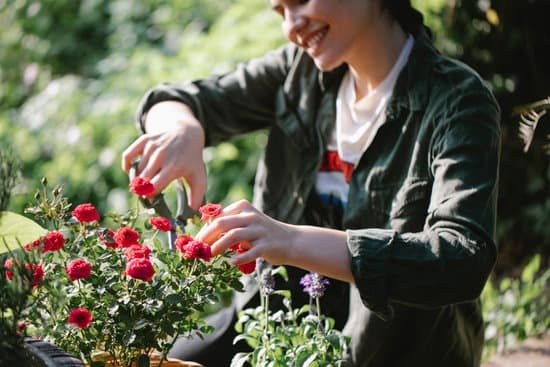Are you interested in starting your own vegetable garden but not sure where to begin? Look no further. In this article, we will explore vegetable gardening ideas for beginners, providing you with the essential information and tips to help you get started on your gardening journey. Whether you have a spacious backyard or just a small balcony, there are plenty of options available for you to grow your own fresh and delicious vegetables.
The thought of growing your own vegetables may seem daunting at first, especially if you have little to no experience in gardening. However, with the right guidance and knowledge, vegetable gardening can be a rewarding and enjoyable experience. From choosing the right vegetables to dealing with common pests and diseases, this article will cover everything you need to know to kick start your very own vegetable garden.
We will start by discussing the basics of vegetable gardening, including the importance of choosing the right location and preparing the soil for planting. We will also provide valuable insight into essential tools needed for successful vegetable gardening.
Whether you have a green thumb or are completely new to gardening, this article aims to provide you with the necessary information to help you grow a thriving and bountiful vegetable garden. So let’s dig in and explore the wonderful world of vegetable gardening together.
Choosing the Right Vegetables to Grow
When starting a vegetable garden, one of the most important decisions is choosing the right vegetables to grow. This can be an overwhelming task for beginners, but with some careful consideration and research, it can be a rewarding and enjoyable process. Here are some tips for selecting the perfect vegetables for your garden.
Consider Your Climate and Growing Season
Before choosing which vegetables to grow, it’s important to consider your climate and growing season. Some vegetables thrive in cool weather, while others require warm temperatures to flourish. Research which vegetables are best suited to your specific region and the length of your growing season.
Think About Your Preferences and Needs
Another important factor to consider when choosing vegetables is your own preferences and needs. Think about the vegetables that you enjoy eating and those that you frequently use in your cooking. Additionally, consider the space you have available in your garden and how much time you can dedicate to caring for your plants.
Start With Easy-to-Grow Vegetables
For beginners, it’s beneficial to start with easy-to-grow vegetables that require minimal maintenance. Some excellent options for first-time gardeners include tomatoes, peppers, zucchini, lettuce, carrots, and radishes. These vegetables are relatively low-maintenance and can be very rewarding for beginners.
By carefully considering your climate and growing season, thinking about your preferences and needs, and starting with easy-to-grow vegetables, you can choose the perfect vegetables for your first vegetable garden. With these vegetable gardening ideas for beginners in mind, you’ll be well on your way to a successful and enjoyable gardening experience.
Selecting the Perfect Location for Your Garden
When it comes to vegetable gardening, one of the most crucial decisions you’ll make is choosing the perfect location for your garden. The right location can make a significant impact on the success and productivity of your vegetable garden. Here are some important considerations when selecting the perfect spot for your garden.
Sunlight Requirements
Most vegetables thrive in full sunlight, so it’s essential to choose a location that receives at least 6-8 hours of direct sunlight per day. Before planting, observe your yard at different times of the day to identify the sunniest spots. Keep in mind that the sun’s angle changes throughout the year, so take this into account when planning your garden layout.
Access to Water
Your vegetable garden should be located near a water source to make watering more convenient. If you don’t have a nearby water spigot, consider installing a drip irrigation system or setting up a rain barrel to collect and store rainwater for watering your plants.
Soil Quality
Before setting up your vegetable garden, it’s important to assess the quality of the soil in your chosen location. Most vegetables prefer well-draining soil with plenty of organic matter. Consider conducting a soil test to determine its pH and nutrient levels, and then amend the soil as needed to create an optimal growing environment for your plants.
By carefully considering these factors when choosing the location for your vegetable garden, you’ll be setting yourself up for success from the very beginning. With proper planning and preparation, you’ll be well on your way to enjoying a bountiful harvest from your own backyard. These are just some
Preparing the Soil for Planting
Before you start planting your vegetable garden, it is essential to prepare the soil properly. Healthy soil is the foundation for a successful garden, as it provides the necessary nutrients and support for your plants to thrive. Here are some tips for preparing the soil for planting:
First, test the soil to determine its pH level and nutrient content. You can easily do this with a simple DIY test kit or by sending a sample to a local agricultural extension office. Once you know the nutrient levels and pH of your soil, you can make any necessary adjustments by adding amendments like compost, peat moss, or sulfur.
Next, remove any weeds or debris from the planting area to give your vegetables plenty of space to grow without competition. Loosen the soil with a garden fork or tiller, breaking up any compacted areas and creating a loose, aerated environment for root development.
Finally, consider adding organic matter to improve soil structure and fertility. Compost, aged manure, leaf mold, or other organic materials can be worked into the soil to provide a steady supply of nutrients as they decompose. Aim for at least 3 inches of organic matter throughout your planting area.
By taking these steps to prepare your soil before planting, you will create an optimal growing environment for your vegetables and set yourself up for a successful gardening season.
| Task | Details |
|---|---|
| Soil Testing | Determine pH level and nutrient content through testing. |
| Weed Removal | Clear out any weeds or debris from the planting area. |
| Adding Organic Matter | Work in compost, aged manure, or other organic materials into the soil. |
Essential Tools for Vegetable Gardening
When starting a vegetable garden, having the right tools is essential for success. Here are some must-have tools for beginner vegetable gardeners:
1. Hand Trowel: A hand trowel is a small tool with a pointed, scoop-shaped metal blade and a handle. It’s perfect for digging small holes for planting seeds or seedlings, breaking up clumps of soil, and transplanting young plants.
2. Garden Fork: A garden fork is essential for turning and aerating the soil before planting. It’s also useful for mixing in compost or other amendments to improve soil structure and fertility.
3. Pruning Shears: Pruning shears, also known as secateurs, are used for cutting stems and branches of plants. They come in handy for harvesting vegetables like tomatoes, peppers, and herbs, as well as for pruning and shaping your plants.
4. Watering Can or Hose: Proper watering is vital for the health of your vegetable plants. A watering can or hose with a nozzle attachment allows you to control the flow of water so you can give your plants just the right amount of moisture they need.
5. Garden Gloves: Protect your hands from thorns, prickly stems, and blisters by wearing a pair of durable garden gloves while working in the garden.
These essential tools will help you get started on your vegetable gardening journey and make it easier to care for your growing plants.
As you begin your vegetable gardening journey as a beginner, having the necessary tools at your disposal will make the process more enjoyable and successful. By investing in these essential tools, you’ll be better equipped to plant, nurture, and harvest a bountiful crop of delicious vegetables from your own backyard. Remember that having the right tools not only makes gardening easier but also helps ensure that your plants thrive throughout the growing season.
Planting and Caring for Your Vegetables
When it comes to vegetable gardening ideas for beginners, one of the most important aspects is knowing how to properly plant and care for your vegetables. Here are some tips to help you get started on the right foot:
- Follow the planting instructions on the seed packets or plant labels. Different vegetables have different spacing and depth requirements, so be sure to read and follow these guidelines carefully.
- Water your plants regularly, especially during dry spells. Most vegetables require at least 1 inch of water per week, either from rainfall or irrigation.
- Fertilize your plants as needed. Some vegetables may require more frequent feeding than others, so be sure to research the specific needs of the plants you are growing.
Caring for your vegetables also involves keeping an eye out for any signs of pests or diseases that may affect your plants. Regularly inspect your garden for any unusual spots on leaves, holes in foliage, or other signs of damage. If you notice any issues, take action immediately to prevent further damage.
By following these planting and caring tips, you can ensure that your vegetable garden thrives and produces a bountiful harvest for you to enjoy.
Dealing With Common Pests and Diseases
One of the biggest challenges for beginners in vegetable gardening is dealing with common pests and diseases that can affect their plants. These can include insects like aphids, caterpillars, and beetles, as well as plant diseases such as powdery mildew and blight. However, there are several strategies that novice gardeners can use to manage these issues.
One effective method for controlling pests in your vegetable garden is to encourage natural predators, such as ladybugs and lacewings, which feed on harmful insects. Additionally, using physical barriers like row covers can help protect your plants from pests without the need for chemical pesticides. When it comes to diseases, practicing good sanitation by removing any infected plant material and providing adequate air circulation can reduce the risk of spreading illness among your vegetables.
Another important aspect of managing pests and diseases is to monitor your garden regularly. By inspecting your plants frequently, you can detect any signs of trouble early on and take action before the problem becomes more severe. Additionally, rotating your crops each year and avoiding planting the same species in the same location can help prevent the buildup of pests and diseases in the soil.
When it comes to maintaining a healthy vegetable garden, prevention is key. By implementing these strategies and staying informed about common pests and diseases that may affect your plants, beginner gardeners can successfully overcome these challenges while enjoying a bountiful harvest.
| Common Pests | Preventative Measures |
|---|---|
| Aphids | Natural predators like ladybugs |
| Powdery Mildew | Good air circulation and removal of infected plant material |
| Caterpillars |
Harvesting and Enjoying the Fruits of Your Labor
After all the hard work of planting, watering, and caring for your vegetable garden, the time has finally come to enjoy the fruits of your labor. Harvesting your homegrown vegetables is a rewarding experience that brings a sense of accomplishment and satisfaction. Not only do you get to enjoy fresh, delicious produce, but you also have the opportunity to share your harvest with family and friends.
When it comes to harvesting your vegetables, timing is key. Each type of vegetable has its own specific harvesting window, so it’s important to familiarize yourself with the optimal time to pick each variety. For example, tomatoes should be harvested when they are fully colored and firm to the touch, while leafy greens like lettuce and kale can be continuously harvested by picking individual leaves as needed.
Once you’ve harvested your vegetables, it’s time to enjoy them in a variety of culinary creations. Whether you’re making a fresh salad with crisp lettuce and juicy tomatoes or sautéing tender zucchini and flavorful bell peppers, there are endless possibilities for incorporating your homegrown produce into delicious meals. Additionally, preserving methods such as freezing, canning, or pickling allow you to savor the flavors of your garden long after the harvest season has ended.
As a beginner in vegetable gardening ideas for beginners it may take some trial and error to perfect the art of harvesting and enjoying your garden’s bounty. However, with practice and experience, you’ll become more adept at recognizing when each vegetable is at its peak ripeness and flavor. The joy of growing your own food is not only in the process but also in savoring the delicious results of your efforts.
Resources for Further Learning and Inspiration
In conclusion, vegetable gardening is a rewarding and enjoyable activity that can provide you with fresh and healthy produce right from your own backyard. By following the tips and guidelines outlined in this article, beginners can start their own vegetable garden with confidence. Whether you have a small balcony or a spacious backyard, there are plenty of vegetable gardening ideas for beginners to explore and experiment with.
It’s important to remember that success in vegetable gardening doesn’t happen overnight. It requires patience, dedication, and learning from both successes and failures. As you continue on your gardening journey, don’t be afraid to reach out to local gardening clubs or online communities for support and advice. There are also countless resources available in books, websites, and workshops that can provide further learning and inspiration for your vegetable gardening endeavors.
In addition to the practical aspects of vegetable gardening, it’s also important to savor the experience and enjoy the process. From watching seeds sprout to harvesting your first ripe tomato, there is joy in every step of the journey.
So go ahead, roll up your sleeves, get your hands dirty, and dive into the world of vegetable gardening with enthusiasm and determination. With these ideas as a starting point, you’ll be well on your way to creating a thriving garden full of delicious fruits and vegetables in no time.
Frequently Asked Questions
What Should I Put in My Beginner Vegetable Garden?
When starting a beginner vegetable garden, it’s important to choose easy-to-grow vegetables like tomatoes, cucumbers, zucchini, lettuce, and radishes. These vegetables don’t require overly complicated care and can thrive in various growing conditions.
What Vegetables Are Easiest to Grow for Beginners?
For beginners, some of the easiest vegetables to grow include radishes, lettuce, green beans, and cherry tomatoes. These vegetables have relatively low maintenance needs and are forgiving of occasional beginner gardening mistakes.
What Vegetables Are Good for First-Time Gardeners?
First-time gardeners would benefit from choosing vegetables like leafy greens (lettuce, spinach), root vegetables (carrots, radishes), and herbs (basil, mint). These plants are generally low-maintenance and can adapt to different growing environments, making them ideal for beginners to cultivate successfully.

Welcome to my gardening blog! I am passionate about plants and enjoy sharing my knowledge and experiences with others. In this blog, I will write about everything related to gardening, from tips on how to get started to updates on my own garden projects.





